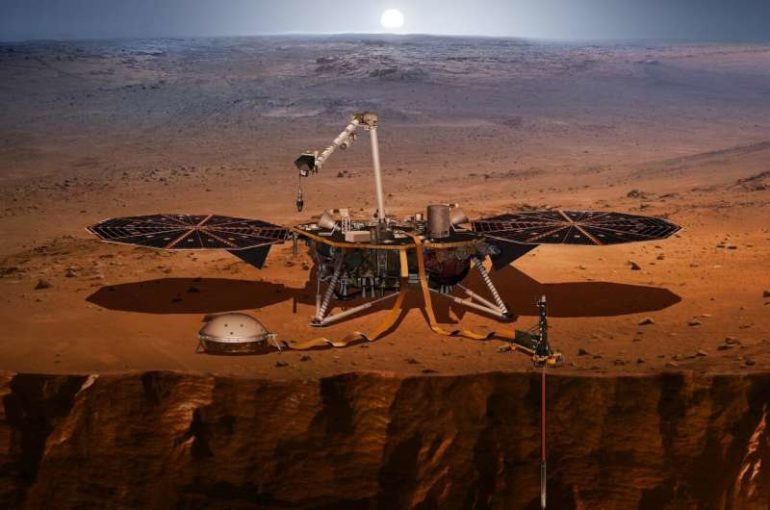An international team of researchers studying seismic data collected by NASA’s Insight spacecraft has used the data to calculate the size of Mars’ core. The group plans to discuss their findings at this year’s Lunar and Planetary Science Conference, which will be held virtually due to the pandemic. As a prelude to the conference, team member Simon Stähler has made available a prerecorded presentation for those interested. The team intends to submit their results to a peer-reviewed journal in the near future.
Up until now, the only celestial bodies that have had their cores measured were Earth and the moon. To make such measurements, scientists have used seismic data from sensors that detect the sounds made by quakes. Eager to do the same for Mars, NASA sent Insight to the red planet—it landed near the planet’s equator back in 2018 and began listening for Marsquakes soon thereafter. To date, sensors aboard the craft have captured seismic data for approximately 500 quakes. The researchers have found that most of the quakes are quite small compared to those on Earth, though approximately 50 of them have been between 2 and 4 magnitude—strong enough to use for measuring the planet’s interior. Prior to measuring the core, data from Insight had been used to measure the depth and thickness of layers of the Martian crust.
To use seismic data to measure the interior of a planetary body requires many measurements. The sensors can tell where such waves begin and end, which reveals how long it takes for a wave to pass through a given part of the planet. This allows for calculating density. Using this data, the researchers were able to measure the depth of the boundary between the core and the mantle at many places, which allowed them to calculate the size of the core—it has a radius of between 1,810 and 1,860 kilometers, making it approximately half the size of Earth’s core. This finding is somewhat of a surprise—prior research had suggested it would be larger. The new data suggests that the core must contain more light elements than previously thought.
Rice researchers use InSight for deep Mars measurements
More information:
Seismic Detection of the Martian Core by InSight, www.hou.usra.edu/meetings/lpsc2021/pdf/1545.pdf
2021 Science X Network
Citation:
Data from Insight reveals size of Mars’s core (2021, March 19)
retrieved 22 March 2021
from https://phys.org/news/2021-03-insight-reveals-size-mars-core.html
This document is subject to copyright. Apart from any fair dealing for the purpose of private study or research, no
part may be reproduced without the written permission. The content is provided for information purposes only.



